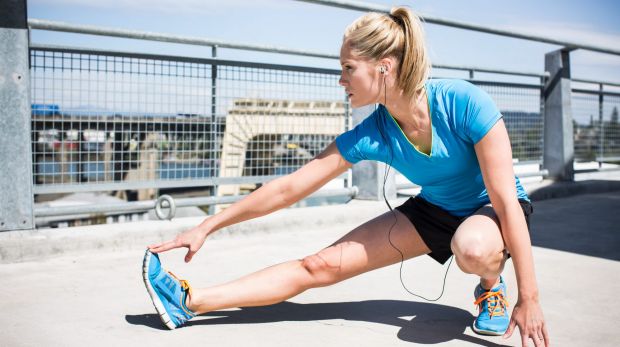
Find other fitness options when life gets in the way of sticking to your exercise routine. Photo: Getty Images
If you happen to be an athlete, reducing the amount of training you do can enhance your performance. But what about us non-athletes who take a break from our usual fitness routine?
Will a holiday from running, cycling, lifting or CrossFit training make it harder to pick up the same pace again, especially if you’ve just established an exercise habit?
A lot depends on factors like age, fitness level, the type of exercise you’ve been doing and how long you take off. However, let’s start with some good news: when it comes to picking up a set of weights or swinging a kettle bell again after a break, you may not miss a beat.
One of the great things about resistance training is not only how quickly it delivers improvements in strength, but that you can usually retain these gains even after two or three weeks off, says senior lecturer Herb Groeller from the University of Wollongong’s Centre for Human and Applied Physiology.
But when it comes to cardiovascular fitness – your ability to keep going when you’re jogging, running or walking – the detraining effect is faster.
When you take time off, endurance drops more rapidly and takes longer to return once you start training again, he says.
“After a two to four-week break, you’ll lose approximately 5 to 10 per cent of your cardiovascular fitness,” he says, explaining that one of the changes that occurs when you stop your usual cardio routine is a drop in the production of aerobic enzymes that help muscles use oxygen.
Another change is the rapid reduction in the number of mitochondria. These little powerhouses in our cells, which help to produce energy, decrease significantly within the first week.
But don’t beat yourself up if you can’t maintain your usual routine; accept that your fitness level will fluctuate and work on being as physically active as possible in other ways, Groeller says.
“If you’re a cyclist and you can’t take your bike, just walk and if it’s too hot to run, go swimming instead,” he says. “Doing something different can be positive. The body will adapt and benefit from physical activity that is varied or novel, just take it easy at first if you’re trying something new.
“We all have periods when life gets in the way of sticking to your usual exercise routine so it’s good to have a plan B and find ways to fit in movement wherever you can. If you’re travelling, for example, avoid the lifts and take the stairs and do some exercises and stretches in your hotel room.”
But whatever you do, try to avoid spending long hours sitting in front of a screen.
Just say you’ve established a walking habit, and manage to achieve your 8000 to 10,000 steps on most days, but then take time off to lounge in front of the cricket for a couple of weeks; all that sitting and no walking can result in marked changes in the body even after a relatively short period of inactivity, Groeller says.
Your ability to control your blood glucose levels drops, muscle mass is reduced and fat deposits can begin to increase around your abdominal organs – changes that are linked to poorer health, he says.
So even if you’re not keen on walking, it’s best to avoid long uninterrupted stretches of sitting by moving around as much as possible during the day.
Recent Spanish research looked at what happened when a group of overweight, middle-aged people did regular aerobic interval training for four months, and then stopped. After just one month of no exercise, they’d lost the improvements they’d made to their fitness and their levels of “good” HDL cholesterol.
Still, the human body is quite plastic and while it’s not hard to lose the gains you make with regular exercise, it doesn’t take long to regain them either, Groeller says.
And if you’ve never had an exercise habit, and decide that 2015 is the year to get moving, then give yourself a pat on the back – even if you are still sitting on the couch.
“Just thinking about exercise is a positive first step,” he says, adding that the trick to making exercise part of your life is to build a habit first.
Groeller’s advice: start small, keep it simple and convenient, but regular; convince friends to come along if you can, and once you have a routine, gradually increase the exercise time until you’re doing at least 30 minutes on most days of the week.
